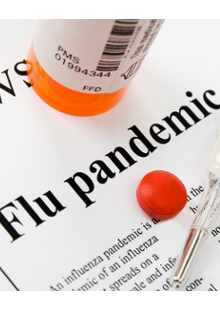Marinova responds to new study on increased deaths from 2009 swine flu pandemic

More than three years after the emergence of the 2009 pandemic influenza A H1N1 virus, the associated global mortality remains unclear. Approximately 18,500 laboratory-confirmed deaths caused by the 2009 pandemic swine influenza were reported worldwide for the period April 2009 to August 2010. According to the British medical journal, The Lancet (25 June 2012), this number is likely to be only a fraction of the true number of the deaths associated with the swine flu.
A global team of scientists, led by the US Centres for Disease Control and Prevention conducted a lengthy study that recalculated the deaths attributed to the swine flu using a different statistical methodology. They concluded that globally about 284,500 people lost their lives to the Swine flu pandemic, with a high probable range between 151,700 and 575,000. About two-thirds of deaths were caused by respiratory problems and the rest by heart attacks and other cardiovascular events. These numbers are vastly higher than the death outcomes originally reported.
In early May 2010, Marinova reported a breakthrough in its own scientific discovery which showed that Maritech® 926 – a unique fucoidan compound extract from the seaweed species Undaria pinnatifida – could inhibit the swine flu (H1N1) at very low concentrations. This compound was part of testing conducted under contract to the National Institute of Allergy and Infectious Diseases (NIAID), part of the National Institutes of Health (NIH) in the USA.
In responding to the new report, Mr Paul Garrott, CEO of Marinova, stated: “These findings offer a very credible response to the critics who, at the time, felt that governments, including Australia, had over reacted to the swine flu and had overspent on research, vaccines and anti-viral drugs.”
“Whilst our Maritech® 926 is not a replacement for vaccines, it is a potent natural extract which may potentially support the immune system against viral attacks. We are continuing to research the anti-viral activity of our fucoidan compounds and we anticipate making further contributions to the existing science in the near term”.
Reference
Dawood, F.S. et al, Estimated global mortality associated with the first 12 months of 2009 pandemic influenza A H1N1 virus circulation: a modelling study. Lancet Infect Dis, 2012. doi:10.1016/S1473-3099(12)70121-4 (Epub ahead of print).